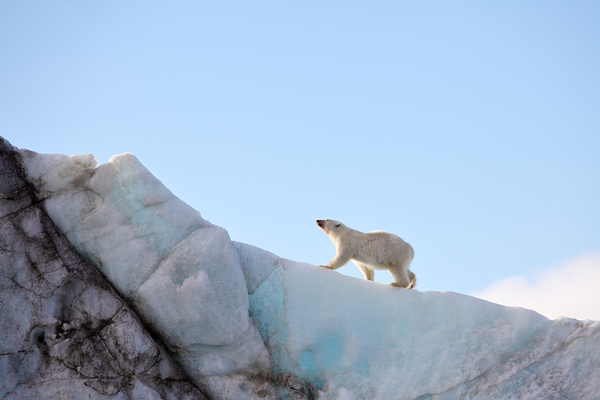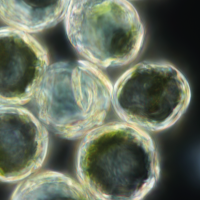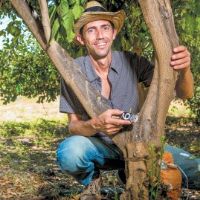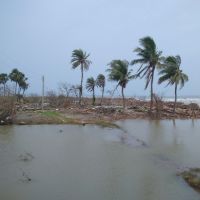COP26 at the British Ecological Society
Find out what the BES has been working on in the lead up to the COP26 UN Climate Change Conference.

World leaders have gathered in Glasgow for the COP26 UN Climate Change Conference and the pressure is on to reach an agreement to keep global warming below 1.5°C. Find out below what BES members and staff have been working on in the lead up to this momentous meeting.
Road to COP26 Blog Series
Editors and authors from across the BES journals share their research at the interface of climate and ecology and their hopes for COP26.
Microscopic phytoplankton are storytellers of our oceans under climate change

Dr Rosie Sheward of the Goethe-University Frankfurt shares how combining data from living and fossil phytoplankton communities can help us to bridge the range of timescales and ecosystem complexity involved in understanding how marine organisms are impacted by climate change.
Antarctic moss – an unusual tool in climate change research

Dr Jessica Royles, Associate Editor on Methods in Ecology and Evolution, explains her research using Antarctic mosses as a tool to investigate the environmental conditions of the past, revealing how unusual recent climate change has been and the impact it has already had on biological systems.
Global warming but local heat exposure

As ecologists, we know that impacts are rarely truly balanced or symmetrical. Functional Ecology Editor Dr Tamir Klein discusses what climate change means for India and Africa’s growing populations.
Time to integrate global climate change and biodiversity science-policy agendas

Dr Nathalie Pettorelli, Senior Editor for Journal of Applied Ecology, explains how the COP26 presents a clear window for developing coherent policy frameworks that align targets across the nexus of biodiversity and climate change.
The Impacts of Climate Change: From a Butterfly’s Microbiome to Food Security

Dr Daniel Montoya, Associate Editor for Journal of Animal Ecology, discusses two examples of climate change research from his lab at the Basque Centre for Climate Change, illustrating that there is ample scientific evidence of the impacts of climate change on biodiversity, ecosystems and humankind.
Sundarbans in peril: interlinkages between science and society for addressing climate change

Dr Punyasloke Bhadury, Associate Editor for Ecological Solutions and Evidence, explains the effects of climate change on Sundarbans, the world’s largest continuous mangrove biotope, and why protecting ecosystems is a priority not just for nature, but for society.
From Code Red to Code Green?

UN Secretary-General António Guterres declared that the latest IPCC report meant “code red for humanity”, but biodiversity offers both mitigation and adaptation possibilities to the energising demon of climate change: a chance for code green. Dr Peter Bridgewater, Associate Editor for People and Nature, writes about his hopes for COP26 in a series of posts for the Relational Thinking blog.
Functional Strategies to COP26

Forests across tropical regions carry out pivotal functions such as resource uptake, cycling and biomass production and are crucial for terrestrial carbon sink dynamics. Here, Dr Jesus Aguirre Gutierrez of the University of Oxford presents his research on the role of functional diversity in the response of tropical forests to climate change.
Road to COP26 Virtual Issue
Read our brand new Virtual Issue, edited by Jessica Royles of the University of Cambridge, which brings together key articles from all seven of the BES journals that highlight how climate change is affecting global ecology and vice versa.
Nature-based Solutions to Climate Change
Nature can be our ally in responding to the twin crises of biodiversity loss and climate change. Read the British Ecological Society’s landmark 2021 report on Nature-based Solutions to climate change here.
COP26 Peatland Collection
Applied Ecology Resources have curated a collection of peatland restoration resources for the COP26 virtual Peatlands Pavilion. Discover reports, original research, blog posts and more – shared by NGOs, government agencies, researchers and other practical ecologists from across the globe.
Guide to COP26
Want to find out more about the legislative background to the conference and what’s on the agenda? Read our handy Guide to COP26.
You can also watch Dr Isabel Jones, Chair of the BES Scottish Policy Group and contributor to the guide, talk about the key issues on the COP26 agenda and how you can get involved in COP26, no matter where you are in the world.
From nature-based solutions🌳 to regulating carbon markets💲, @_Isabel_Jones, Chair of the @BES_ScotPol, tells us about the key issues on the COP26 agenda.
➡️Follow the link to find out more in our guide to COP26 pic.twitter.com/CaoYXgYOpb— British Ecological Society (@BritishEcolSoc) October 21, 2021
In our second video on our guide to #COP26, @_Isabel_Jones, Chair of the @BES_ScotPol, tells us about how we can all get involved in, no matter where we live. pic.twitter.com/9ZXpSOpasP
— British Ecological Society (@BritishEcolSoc) October 22, 2021
COP15
Enya O’Reilly of the BES Conservation Ecology SIG has written an introduction to the Convention on Biodiversity’s next meeting, COP15, and a report on the outcomes of COP15 Part 1, which was hosted online in October. Part 2 will take place in Kunming, China next year.
Further reading from the BES
Conservation Research, Policy and Practice edited by William J. Sutherland, Peter N. M. Brotherton, Zoe G. Davies, Nancy Ockendon, Nathalie Pettorelli, Juliet A. Vickery
An open access book and a must-read for practitioners, researchers, graduate students and policymakers wishing to enhance the prospect of their work making a difference.
Like what we stand for?
Support our mission and help develop the next generation of ecologists by donating to the British Ecological Society.